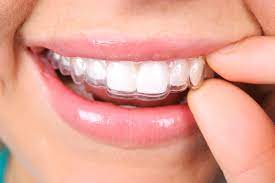If you’re new to orthodontic treatment or just finishing braces, you may be wondering what is a dental retainer and why do you need one? A dental retainer is a custom-made device designed to keep your teeth in their new position after orthodontic work. Without a Dental Retainers, teeth can shift back to their original positions, undoing months or years of treatment. Understanding the purpose and types of retainers is essential for maintaining a healthy, straight smile long-term.
The Purpose of a Dental Retainer:
A dental retainer serves one primary function: to hold your teeth in place after orthodontic treatment such as braces or Invisalign. Teeth have a natural tendency to move back due to the elastic fibers in your gums and bone remodeling processes.
Key reasons you need a retainer include:
- Preventing teeth from shifting back to misalignment
- Stabilizing bone and soft tissue around teeth
- Ensuring your orthodontic results last over time
- Avoiding the need for additional corrective procedures
Without consistent retainer use, teeth can relapse, leading to crooked or crowded smiles once again.
Types of Dental Retainers:
Dental retainers come in various forms, tailored to your specific orthodontic needs and lifestyle. Choosing the right retainer is a decision made between you and your orthodontist based on comfort, durability, and the amount of tooth movement correction needed.
Common types include:
- Hawley retainers: Removable, made with a metal wire and acrylic base
- Clear plastic retainers: Thin, transparent, and less noticeable
- Fixed retainers: Bonded wires glued behind your teeth for constant support
Each type has pros and cons depending on ease of use, aesthetics, and maintenance.
How Long Do You Need to Wear a Retainer?
The duration for which you must wear a dental retainer varies by individual and treatment complexity. Initially, orthodontists often recommend full-time wear, gradually reducing to nighttime only.
Typical wear guidelines:
- Full-time wear for the first 3 to 6 months post-braces
- Nighttime wear indefinitely or as advised
- Regular follow-ups to assess tooth stability
Consistency in retainer wear is crucial during this phase to lock your teeth in place permanently.
Caring for Your Dental Retainer:
Proper retainer care is important to maintain its function and hygiene. Neglecting your retainer can lead to bacteria buildup, bad odors, and reduced effectiveness.
Tips for retainer care include:
- Cleaning daily with a soft toothbrush and mild soap or retainer cleaner
- Avoiding hot water which can warp plastic retainers
- Storing in a protective case when not in use
- Keeping away from pets who might chew on them
- Scheduling regular dental visits to check retainer fit and condition
Well-maintained retainers help preserve your smile and oral health.
Signs You Might Need a New Retainer:
Over time, Dental Retainers Treatment can wear out, become loose, or get damaged, compromising their ability to hold teeth in place. Recognizing these signs helps you act quickly to prevent relapse.
When to contact your orthodontist:
- Retainer feels loose or uncomfortable
- Noticeable cracks, warping, or discoloration
- Teeth beginning to feel crowded or shifting again
- Retainer lost or broken
Timely replacement or adjustment ensures your orthodontic investment is protected for years.





Comments